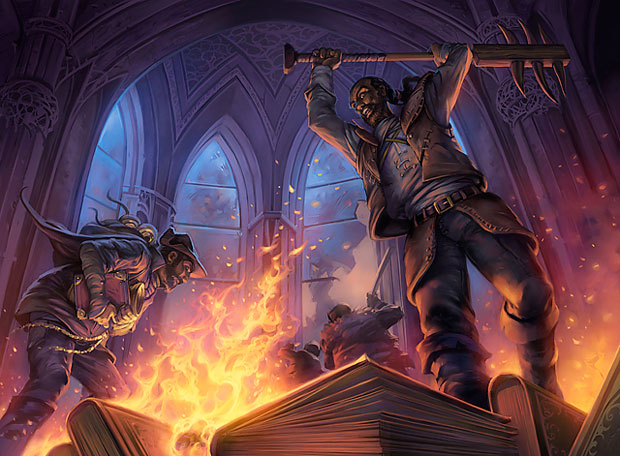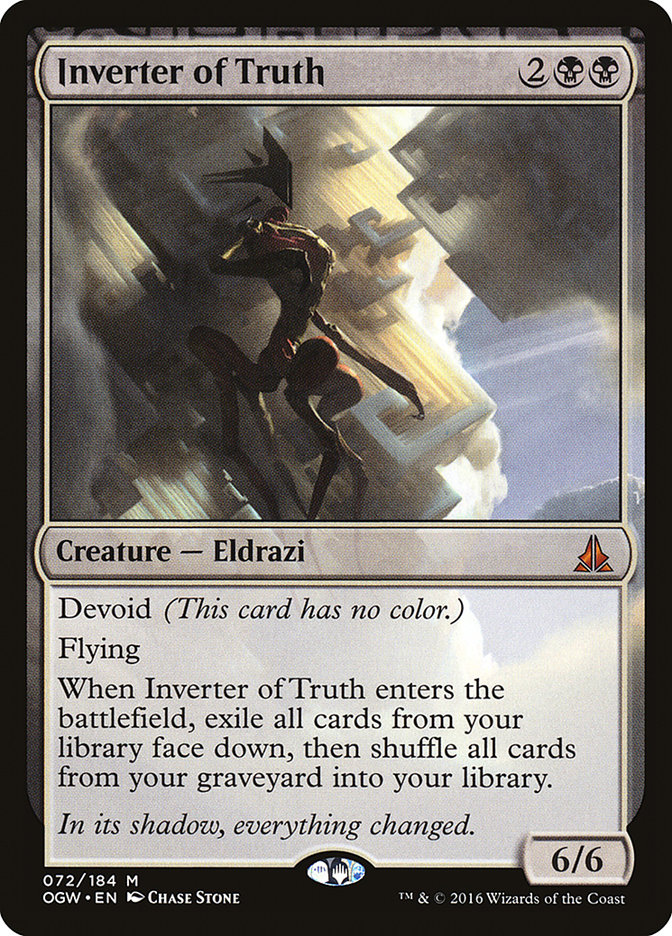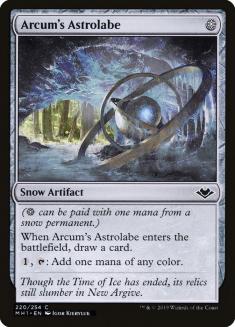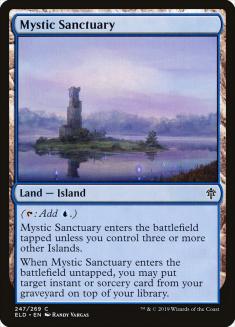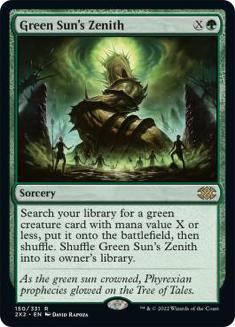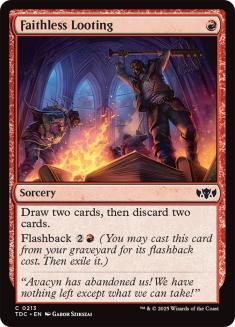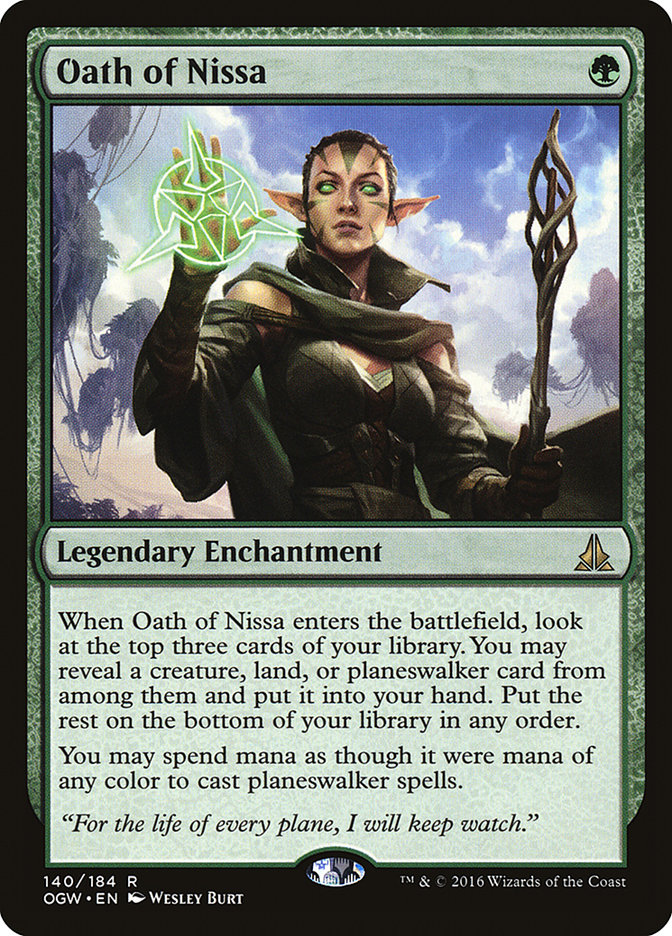Welcome to another edition of Fact or Fiction! Today, Dom Harvey, Ari Lax, and Carmen Handy are here to give their takes on five statements on the upcoming July 13th Banned & Restricted Announcement. Don’t forget to vote for the winner at the end!
1. Inverter of Truth is the only card that should be banned in Pioneer in Monday’s Banned & Restricted announcement.
Dom Harvey: Fiction. I don’t think Dimir Inverter should be the only target or that Inverter of Truth is the right ban from its namesake. Dimir Inverter is successful in its current form largely because Dig Through Time is the strongest card in the format — Dimir Inverter is the best Dig Through Time deck thanks to the cheap interaction in black filling the graveyard early and the combo with Inverter of Truth and Thassa’s Oracle / Jace, Wielder of Mysteries giving Dig high-impact hits. Removing Dig prevents it from becoming a problem in another context and allows other Inverter shells — the self-mill Sultai Inverter deck that drew brief attention before the first Players Tour in February, the combo-centric Sultai Inverter lists with Eldritch Evolution, or the elaborate combo chains with Prime Speaker Vannifar — to add healthy variety to the format.
I expect the hammer to fall elsewhere too. After its surprise domination of the Players Tour in February, Lotus Breach is the only deck that has stood the test of time in a format defined by Dimir Inverter. As with many linear combo decks, its success depends on people’s willingness to sideboard powerful hate cards. Against creature combo decks like Abzan Rally, ‘normal’ interaction like removal or discard has a clear use. The crucial difference with Lotus Breach is that only a handful of cards do the job — Damping Sphere and Alpine Moon — and traditional anti-combo tools like Eidolon of the Great Revel or Deafening Silence are unreliable. Games against Lotus Breach often reduce to uninteresting binaries — whether you can race it pre-sideboard and whether you can stick Damping Sphere post-sideboard. A targeted ban of Lotus Field would make Pioneer’s deckbuilding and gameplay less stale.
Ari Lax: Whatever. The problem with Pioneer goes deeper than just Inverter of Truth being legal, and I don’t know what the fix is. It’s been demolished and rebuilt by basically every set release until Core Set 2021, and now the complaint is that it’s too static with a best deck? Dimir Inverter is a good deck, but it’s the right kind of good where you get weird angles of attack against them like Modern Death’s Shadow.
On Magic Online, the format isn’t that much more accessible than Modern. It isn’t really a home for old cards because so much of the power is on the Banned List or in the last year of sets. This wasn’t the point when we could play physical Wizard rectangles, but good luck knowing when the next one of those events is.
Maybe you should ban Inverter of Truth, or Dig through Time, or really you should think about how to make all your non-rotating formats feel different and what Pioneer’s role in that is before making decisions.
Carmen Handy: Fiction. The largest problem with Pioneer at this point is that it has become largely stale. Ross Merriam had a great write-up on the format earlier this week with a more detailed version of this, but the short version is that the format on the whole has been in the same place for several months. Toppling the pillar that is Inverter of Truth may allow for a deck or two to crop up, but the decks that were at the top of the metagame before will likely stay there, and still be fundamentally stronger than the decks that Inverter was holding back.
If Wizards of the Coast is interested in a minimalist approach, hitting something like Jace, Wielder of Mysteries in order to make Inverter worse at its fair role would be great. Otherwise, a scorch-the-earth approach more akin to early Pioneer would be a great way to emulate the shake-up that companions originally gave to the format.
2. Arcum’s Astrolabe is the only card that should be banned in Modern in Monday’s Banned & Restricted announcement.
Dom Harvey: Fiction, but Astrolabe needs to go. Arcum Dagsson’s smallest creation is his greatest. The innocuous snow globe has buried the colour pie in a tundra — the most common deckbuilding choice in Modern and Legacy is between different printings of your snow-covered basic lands. This new breed of blue deck can play the best threats and interaction from each colour while protecting themselves from effects like Blood Moon (or even playing them!) and avoiding the trade-offs that usually come from such ambitious colour requirements. Why bother with Azorius Stoneblade or Blue Moon or any other deck with a more distinct identity when you can blend the best elements of all of them at virtually no cost? Removing Astrolabe opens up other possibilities too (is Mox Opal safe again without Astrolabe as a ‘free’ artifact?).
Modern Horizons is full of cards that push boundaries that have never been tested this hard. Urza, Lord High Artificer; Hogaak, Arisen Necropolis; and Wrenn and Six are just a few examples that have radically altered multiple formats. Despite the competition being tougher than ever, Arcum’s Astrolabe may go down as the most consequential card from Modern Horizons. If you tell me you’re putting Urza or Hogaak in a deck, I know roughly what that deck must look like and what it’s trying to accomplish. No deck is an ‘Arcum’s Astrolabe deck’ and yet every deck that runs it is an Arcum’s Astrolabe deck — it frees you from the choices that keep deckbuilding and gameplay interesting. I look forward to a Modern format where those choices matter again, including which sweet non-snow basic lands to play with.
Ari Lax: Fact. It’s the only card that is a hard “should be banned” in Modern, so close enough to a fact for me even if other things might be on the chopping block. Arcum’s Astrolabe should probably be banned in Legacy too, let alone Modern where it is causing the same issues. Cards have costs for a reason, and the raw package of material, value, and violating the rule of costs is honestly a secondary concern to removing basic lands from older formats.
If playing Sixth Edition basic Plains is wrong, I don’t want to be right.
Carmen Handy: Fiction. If Uro, Titan of Nature’s Wrath could get the Mental Misstep treatment and get erased from Eternal Magic, that would just be incredible. True aggressive strategies have been struggling in Modern since Throne of Eldraine released Oko, Thief of Crowns into the world, and deleting Uro from fair decks would go a long way to legitimizing the fairer creature decks of the world.
Arcum’s Astrolabe is perfectly reasonable to ban, and likely a subtle mistake, but hitting more impactful cards than 2019’s Ponder would do more to impact the format on the whole.
3. Mystic Sanctuary should be banned in multiple formats in Monday’s Banned & Restricted announcement.
Dom Harvey: Fact.
None of us will forgive or forget Oko, Thief of Crowns any time soon, but you can see how we ended up there. Veil of Summer is too good, but it’s too good at something that has been a fixture of Magic since the beginning.
How did we get Mystic Sanctuary? Who could ever think this was a good idea? It’s hard to identify the most egregious card in Throne of Eldraine but Mystic Sanctuary makes a strong case for itself. Much like Arcum’s Astrolabe, it answers questions before they’re even asked — it’s so obviously the best thing to build your blue deck around that your manabase is determined for you. Maybe it was always wrong to play Celestial Colonnade, but at least let me trick myself! It’s a sign of how little it demands that the spells in these decks would remain basically identical if Sanctuary were banned — your Bant Control deck can still do everything it did before; it just doesn’t get to do it whenever it likes. Your Scapeshift deck may actually have to care about losing its titular card to a Thoughtseize sometimes.
However, we shouldn’t let the real culprit off the hook. The problem is not Arcum’s Astrolabe or Mystic Sanctuary. It’s not Deathrite Shaman or Treasure Cruise or Sensei’s Divining Top. It’s not Brainstorm, the most popular card in Legacy for fifteen years. Fetchlands are the problem. The smartest move in Pioneer’s short but turbulent history was the preemptive ban on fetchlands, forcing players to actually make choices when constructing a manabase. Mystic Sanctuary is harmless if you play it on your main phase under certain conditions late in the game once you’ve drawn it. Turning every fetchland into your best spell at instant speed (after your other fetchlands guarantee you have enough Island) is ridiculous.
I fear that fetchlands are too firmly embedded in Modern and Legacy for the argument to gain any traction but this reality is increasingly hard to ignore. As long as we do, these formats will have the same problem as Vintage (itself the perfect advertisement for the dangers of fetchlands) and, when paper Magic returns, we’ll have plenty of time to ponder what went wrong as our opponents shuffle their library for the third time in as many turns.
Ari Lax: Fiction. It is debatable whether Mystic Sanctuary is fun in Modern, but it will be less of an issue once you have to play lands that aren’t Snow-Covered Island to cast your spells.
But in Pauper Mystic Sanctuary isn’t that bad. You can’t instant-speed it out via Misty Rainforest, and the format was already focused on setting up for key interactive battles against threats. Holding action into a recursive Deprive isn’t that big a difference from playing around Pyroblasts or whatever.
I wouldn’t miss Sanctuary if it went and the card is generally miserable when it works, but it probably isn’t necessary to boot out.
Carmen Handy: Fact. If we still aren’t ready to swallow the “un-make fetchlands from Magic entirely” pill, banning Mystic Sanctuary is absolutely necessary. That being said, the fetchland qualifier is only for the “multiple formats” verbiage in the question. Mystic Sanctuary lends itself to incredibly repetitive gameplay at a very low cost. With WotC leaning so much into proactivity the last couple of years, I’m genuinely shocked that Mystic Sanctuary saw print in its current iteration.
4. Uro, Titan of Nature’s Wrath should be banned in multiple formats in Monday’s Banned & Restricted announcement.
Dom Harvey: Fiction. As above, though it sure feels like you’re losing to Uro when it puts the game out of reach, asking how Uro got there points you at the actual problem. Uro is a fine incentive for a Simic shell in Modern when you can’t cast it off Field of Ruin and an Uno card or Legacy where Wasteland has actual text again.
In Standard, note that most Uro decks have less than four copies of the jolliest, greenest giant and can even shave a copy in sideboarding (a common choice in the Temur Reclamation mirror, for example) but it would be blasphemy to register or present fewer than four Growth Spiral. Uro is a great way to stabilize or end the game but Growth Spiral lets you stay in it on the draw or run away with it on the play. Axing another expensive, flagship mythic rare also hurts consumer confidence, while ushering a common out the door a few months ahead of schedule hurts nobody.
Ari Lax: Fiction. Costing GGUU used to mean something. Maybe in a non-Astrolabe world Uro will be fine for Modern.
Pioneer, like I said who knows. Make it a format first.
No one actually knows what should be banned in Historic because no major events have required people to play it, but Nexus of Fate going on Monday can’t hurt.
And Standard isn’t on that list of formats changing. Scavenging Ooze flipped the odds of Uro making it another year there to “wait and see,” but it was a close call.
Carmen Handy: Fact. Delete. This. Card.
Speaking of repetitive gameplay, Uro is like a Gurmag Angler that helps cast itself while also undoing the opponent’s turns in the process. The fact that the card makes it all the way back to Legacy speaks volumes about its efficiency-to-power ratio, and its ability to suppress other strategies makes it an absolute menace.
5. Something should be unbanned in Monday’s Banned & Restricted announcement.
Dom Harvey: Fact. Sure, why not?
An unbanning can soften the blow of a momentous ban and breathe new life into a format, something I suspect will be very welcome on Monday. It’s a rule of Magic that any sufficiently large format will have some head-scratchers on its Banned List, so why not take this opportunity to clean house?
In Pioneer, Oath of Nissa was an early casualty thanks to its role in Mono-Green Devotion and various Saheeli Rai + Felidar Guardian decks. Both of those decks were cut down by other bans and Oath of Nissa offers a nice boost in consistency to other strategies. This includes Kethis Combo, which is already powerful but easier to attack through conventional means than other combo decks like Lotus Breach.
The Modern Banned List contains many cards that were banned at the outset for their performance in Extended. Several of those — Ancestral Vision; Bitterblossom; Sword of the Meek; and Valakut, the Molten Pinnacle — were freed and have settled into a healthy place in the format. Even Jace, the Mind Sculptor and Stoneforge Mystic were less oppressive than initially feared. Why not give Glimpse of Nature or Dark Depths a chance? Are the artifact lands too dangerous without Mox Opal? The next wave of bans cast a wide net — was Green Sun’s Zenith really a problem?
And hey, let’s unban Earthcraft in Legacy while we’re at it. If Squirrel Nest can make its mark in 2020, Bryan Gottlieb tokens will be even more of a priceless treasure…
Ari Lax: Fact. Banning Mox Opal and Faithless Looting in combination with this last year’s flood of design mistakes is a big part of why Modern doesn’t feel like a different format from Legacy, or really other formats. So many safeguards got printed in War of the Spark and Modern Horizons only for the actually scary stuff to get banned. Do you even need Shenanigans or Collector Ouphe now? What are we Force of Negation-ing, or is that just so bad combo like Ad Nauseam can protect itself from Rule of Law?
Carmen Handy: Fact. Unpopular opinion: Give us back Faithless Looting in Modern.
With cards like Force of Negation in existence, as well as stronger fair tools, unbanning Faithless Looting is a way to revitalize decks that previously fell off. During its time in Modern, it enabled a ton of different archetypes, and those multi-functional archetype centerpieces are wonderful in a format that touts its diversity.

